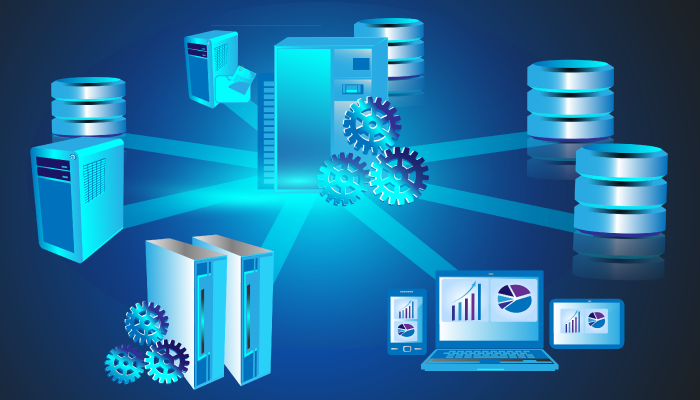Back to: COMPUTER SCIENCE SS3
Welcome to class!
In today’s class, we will be talking about the database and database organisation. Enjoy the class!
Database and Database organisation

Database
A database is a collection of information that is organized so that it can be easily accessed, managed and updated. It is an organized collection of data. It is a collection of schemes, tables, queries, reports, views, and other objects. Database designers typically organize the data to model aspects of reality in a way that supports processes requiring information, such as (for example) modelling the availability of rooms in hotels in a way that supports finding a hotel with vacancies.
A database is a collection of information organized to provide efficient retrieval. The collected information could be in any number of formats (electronic, printed, graphic, audio, statistical, combinations). There is physical (paper/print) and electronic databases. It could be as simple as an alphabetical arrangement of names in an address book or as complex as a database that provides information in a combination of formats.
Computer databases typically contain aggregations of data records or files, such as sales transactions, product catalogues and inventories, and customer profiles.
Typically, a database manager provides users with the ability to control read/write access, specify report generation and analyze usage. Some databases offer ACID (atomicity, consistency, isolation and durability) compliance to guarantee that data is consistent and that transactions are complete.
Data is organized into rows, columns and tables, and it is indexed to make it easier to find relevant information. Data gets updated, expanded and deleted as new information is added. Databases process workloads to create and update themselves, querying the data they contain and running applications against it.
Concept of database
The concept of a database is simply described as the terminologies of database such as
- FIELD
- RECORDS
- FILE
- KEY
Forms of database
The following are the forms of database
- Flat file database: flat-file database store data in a plain text file. Each line of the text file holds one record with field separated by diameters such as command or tabs.
- Hierarchical database: in hierarchical database records are linked in a tree-like structure and each record type has only one owner. E.g an order is owned by only one customer
- Relational database: This is a collection of data items organized is a set formally. Described table from which data can be accessed or reassembled in many different ways without having to recognize the database table. Each table contains one or more data categories in a column. Each role contains unique types of data for the categories defined by columns.
Types of database
One way to classify databases involves the type of their contents, for example bibliographic, document-text, statistical, or multimedia objects. Another way is by their application area, for example, accounting, music compositions, movies, banking, manufacturing, or insurance. A third way is by some technical aspect, such as the database structure or interface type. This section lists a few of the adjectives used to characterize different kinds of databases.
- An in-memory database is a database that primarily resides in main memory, but is typically backed-up by non-volatile computer data storage. Main memory databases are faster than disk databases, and so are often used where response time is critical, such as in telecommunications network equipment. SAP HANA platform is a very hot topic for an in-memory database. By May 2012, HANA was able to run on servers with 100TB main memory powered by IBM. The co-founder of the company claimed that the system was big enough to run the 8 largest SAP customers.
- An active database includes an event-driven architecture which can respond to conditions both inside and outside the database. Possible uses include security monitoring, alerting, statistics gathering and authorization. Many databases provide active database features in the form of database triggers.
- A cloud database relies on cloud technology. Both the database and most of its DBMS reside remotely, “in the cloud”, while its applications are both developed by programmers and later maintained and utilized by (application’s) end-users through a web browser and Open APIs.
- Data warehouses archive data from operational databases and often from external sources such as market research firms. The warehouse becomes the central source of data for use by managers and other end-users who may not have access to operational data. For example, sales data might be aggregated to weekly totals and converted from internal product codes to use UPCs so that they can be compared with ACNielsen data. Some basic and essential components of data warehousing include extracting, analyzing, and mining data, transforming, loading, and managing data to make them available for further use.
- A deductive database combines logic programming with a relational database, for example by using the Datalog language.
- A distributed database is one in which both the data and the DBMS span multiple computers.
- A document-oriented database is designed for storing, retrieving, and managing document-oriented, or semi-structured data, information. Document-oriented databases are one of the main categories of NoSQL databases.
- An embedded database system is a DBMS which is tightly integrated with application software that requires access to stored data in such a way that the DBMS is hidden from the application’s end-users and requires little or no ongoing maintenance.
Evaluation
- Define database
- What is the database concept?
- What are the forms of databases?
- List 6 types of databases
List and explain the four main types of database organization
In our next class, we will be talking about the End-User Database. We hope you enjoyed the class.
Should you have any further question, feel free to ask in the comment section below and trust us to respond as soon as possible.
